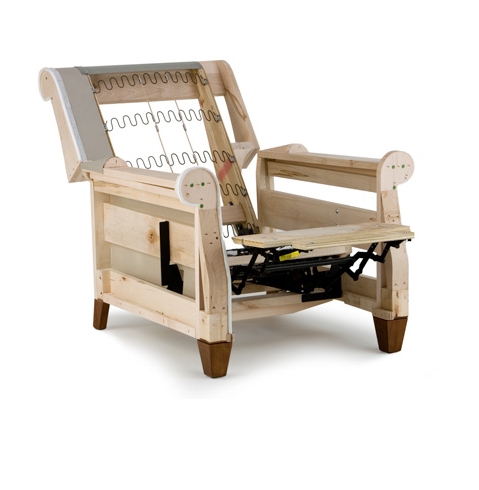Building a recliner chair can be challenging, but you will find that it is well worth the effort in the end.
The following guide includes steps on how to build a recliner chair and tips for making sure your chair lasts for many years to come.

Steps on how to build a recliner chair
Step 1. Purchase the following needed supplies
- Screws, a drill with screwdriver bit attachment, hammer or nail gun (optional), wood glue, and clamps.
- Miter saw table saw or orbital sander for cutting parts to size.
- Paintbrushes of different sizes for painting as well as primer or sealer
- Sandpaper in various grits depending on what finish you want your chair to have.
Lambswool duster if desired; this will help make the paint job look more professional. An electric planer/thicknesser is optional but really helps get rid of excess material that needs to be removed after use such as anything remaining from worn-out chairs being converted into a new one.
Step 2. Mark and cut plywood.
The widest point of the chair is about 52 inches from front to back, so you will need a piece that measures approximately 54 x 76 for the seat frame. The height should be around 27 inches or higher but not more than 30 inches tall.
It’s also important to have it measured correctly so your cuts are accurate; if in doubt get help with this part before moving on because cutting wrong can lead you to have to make another trip out as well as wasting time when doing all these steps again!
Cut three pieces: two parts measuring 48 x 68 (these will become armrests) and one 74 inches long piece for the bottom brace (this width is needed because there needs to be a space for the recliner‘s footrest).
Step 3. Nail or screw the frame together.
First, attach one of the shorter pieces to each side of a longer 48 x 68 piece using screws. Next, add in both armrests and then measure out 16 inches from underneath at either end for hinges (or you can use metal brackets instead if they are easier to find; these will need hanging on later too).
Finally, mount your seat onto the two remaining corners with nails or screws so that it is evenly spaced apart before attaching any other parts! Hinges should be installed last because this makes them stronger when used as well as being able to open up without damaging anything else after installation.
Now your chair has been assembled but we haven’t yet covered how to make it recline. To do this, you’ll need a long strip of cloth measuring 72 inches by 12 inches and then two L-shaped brackets that are just over an inch thick.
Measure the distance from your chair’s seat back (which should be around 15 or 16 inches depending on how comfortable you want) down to where you’ll put the hinge pins so they’re at either end of this measurement when attached properly.
Then mark out your bracket holes with a pencil onto both sides of the frame’ top board and drill them in using a power drill before attaching the hinges on one side as well as securing any loose ends once complete!
Now attach some velcro strips too if you want–these will be used to secure the recliner’s fabric while it’s in use.
Now once your frame is finished, you’ll want to put on the strips of cloth and make sure they are equal distances from one another at all points around the board so that when it is in a reclined position–which should be about 110 degrees for maximum comfortability–the strip will have an easy flow down over each side.
Finally, attach velcro onto both sides as well as to measure out how much slack there needs to be between these two areas so that you can tie them together tightly without any unnecessary bunches or folds before securing with more ties!
The next step after this is making upholstery which we shall describe in detail below:
Steps to making upholstery
Step 1. Buy fabric and have it cut to fit the dimensions of your chair. You will need at least two cuts for each piece, one front, and backside.
Step 2. Put on a strip of tacky adhesive tape (can be found here) around the perimeter edges as you did with the cloth strips before–this is just so that they don’t go sliding off while you’re working!
Step 3. Lay your material out neatly and then pin it in a place where all corners meet. Be sure not to overlap any pins as this may damage or rip them later when removing them from other areas–just remember how much room there is between the first!
This should make things easier if you’re pinning them in place with fabric pins, but if this isn’t an option for the type of tacky adhesive tape that you have on hand then just use a pen to first make some dots so they don’t slip.
Step 4. Lay the other piece out and line it up with the side edges–you may find that one edge is longer than another depending on how long your chair is or how much material was needed to cover all sides.
Pinch in excess from people’s view (so it doesn’t look sloppy) and tuck it under into any crevices by using more tacky adhesive tape like before! Be sure not to overlap when doing so either.
Step 5. Carefully peel off all the pieces of the backing on the underside that are covering your tacky adhesive tape, and place them where they need to be (no overlapping) then press down firmly!
